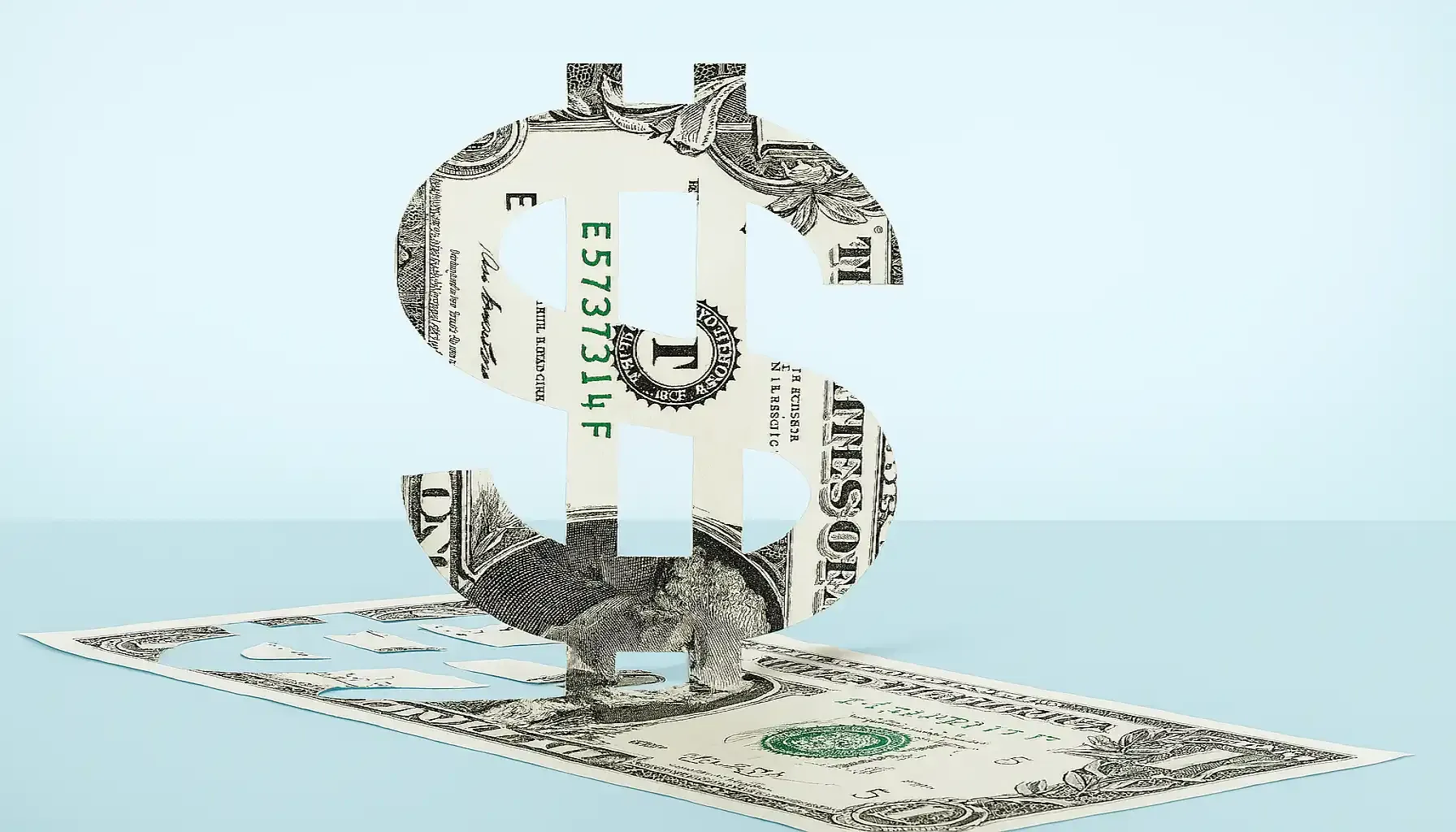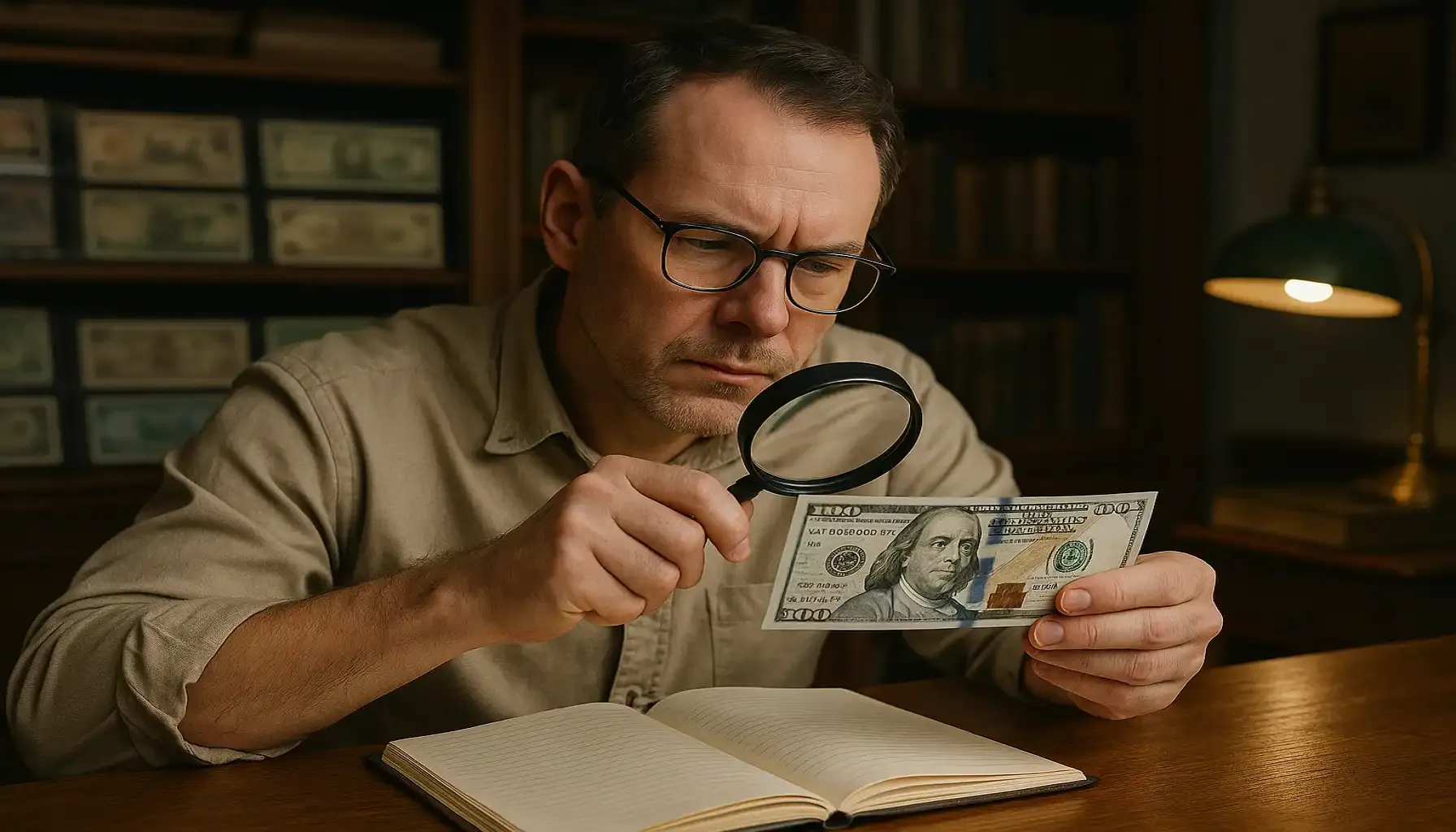Contents:
The presidential line of succession in the US is a well-known order that most citizens are aware of and even proud of, too. The concept of a national leader, when in healthy circumstances, frequently becomes the object of commemoration and immense appreciation, and the sphere of numismatics is always one of the first to respond to such an inquiry.
The John Adams coin is a remarkable example of how the country may pay tribute to presidents and the rich history they shape. So, what is John Adams one dollar coin? What does it look like, and what should we know so as to check coin value on time?

Quick Overview of Who John Adam Was
We know a lot about those who have participated in the founding of the United States, but little do we understand that these were ordinary people with extraordinary skills. Adams was born in Braintree, Massachusetts (now Quincy) on October 30, 1735. He became a Harvard-educated lawyer who could have demonstrated prominence and uncompromising commitment to the ideals of liberty and governance during the American Revolution.
As an influential member of the Continental Congress and a contributor to the drafting of the Declaration of Independence in 1776, Adams was a vital figure in the fight for independence. His ability to negotiate helped him establish important international alliances, particularly with France, which were essential to the Revolutionary War.
Adams had the enormous responsibility of forming the fledgling republic as the country's second president (1797–1801) and first vice president under George Washington (1789–1797). Keeping the peace during the turbulent Quasi-War with France and resolving political divisions between the nascent Federalist and Democratic-Republican parties were two of the major tasks he faced as president.
Design and Features
Designed to commemorate the legacy of the second president of the United States, the John Adams $1 coin is an exceptional piece of numismatic art. Its design, which is a part of the famous Presidential $1 Program, combines contemporary production and historical reverence. But which features could it boast?
Obverse Design: The design description should start with a detailed portrait of John Adams, developed by artist Joel Iskowitz and sculpted by Charles Vickers. The inscriptions like "John Adams"** and "2nd President 1797–1801" surround the portrait:
Reverse Design: On the opposite (reverse) side is a striking and classic picture of the Statue of Liberty, which symbolizes democracy and freedom. This side, which was designed by Don Everhart, bears only 2 inscriptions, i.e. "United States of America" and "$1" (indicating its face value).
Edge Lettering: The incuse edge lettering, which is uncommon in contemporary US currency, is one of the Presidential $1 coins' distinctive characteristics. Besides, it is the edge that features the words "E Pluribus Unum" (which means "Out of Many, One"), "In God We Trust", the minting year (e.g., 2007), and the mint mark ("D" for Denver or "P" for Philadelphia).
Size and Composition: Since this instance is composed of a manganese-brass alloy, it seems to be golden. Moreover, it may present the following features: the dimensions are 26.5 mm in diameter, 2.0 mm in thickness, and 8.1 grams in weight.
Available Finishes: The 2007 John Adams dollar coin comes in a variety of finishes to appeal to both collectors and the general public alike: circulated examples, uncirculated options (those that are well-preserved), and proof ones (those designed for collectors only).
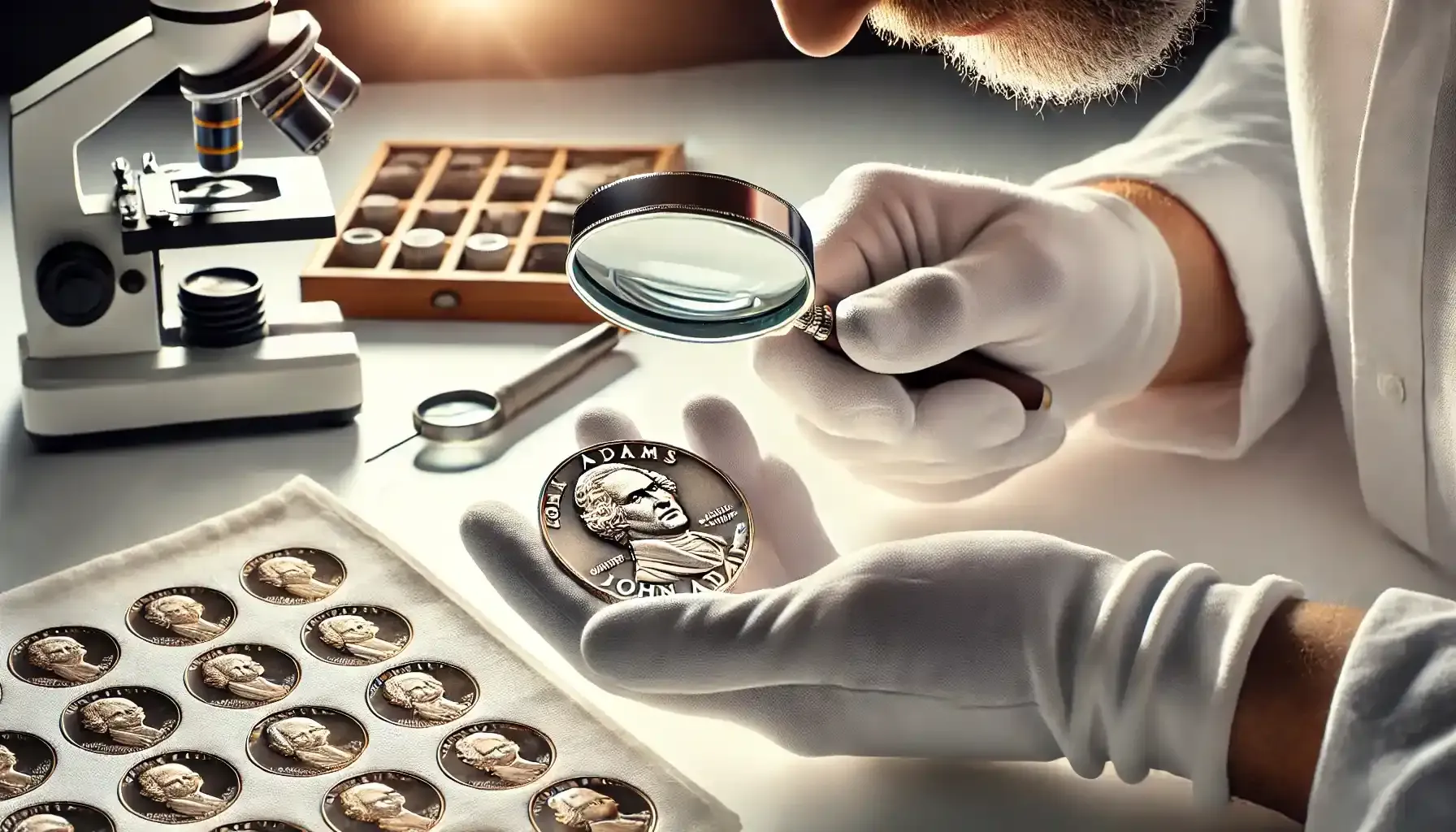
Related article: Top 100 Canadian Valuable Coins.
Mintage and Production of the John Adams 1 Dollar Coins
As part of the Presidential Program, which was started in 2007 to honor former US presidents in the order of their service, there was released the John Adams $1 coin. It was the second in the series and came after the first George Washington numismatic creation (just like real Adams in real life).
Minting Facilities
There were two U.S. Mint sites that were responsible for the manufacturing of this instance, i.e., Philadelphia (P) with approximately 112,420,000 samples, and Denver (D) with 112,140,000 instances produced.
John Adams Dollar Coin Errors and Variants
Sometimes, these instances may include a number of flaws and irregularities, which makes certain pieces particularly valuable to collectors:
Missing Edge Lettering: A production error where the edge inscriptions (e.g., "E Pluribus Unum," "In God We Trust") were omitted. These error creations are rare and highly sought after.
Double Edge Lettering: Instances with overlapping or duplicated edge inscriptions.
Weak Strike or Misalignment Errors: Occasionally, coins display these irregularities in the design due to production issues.
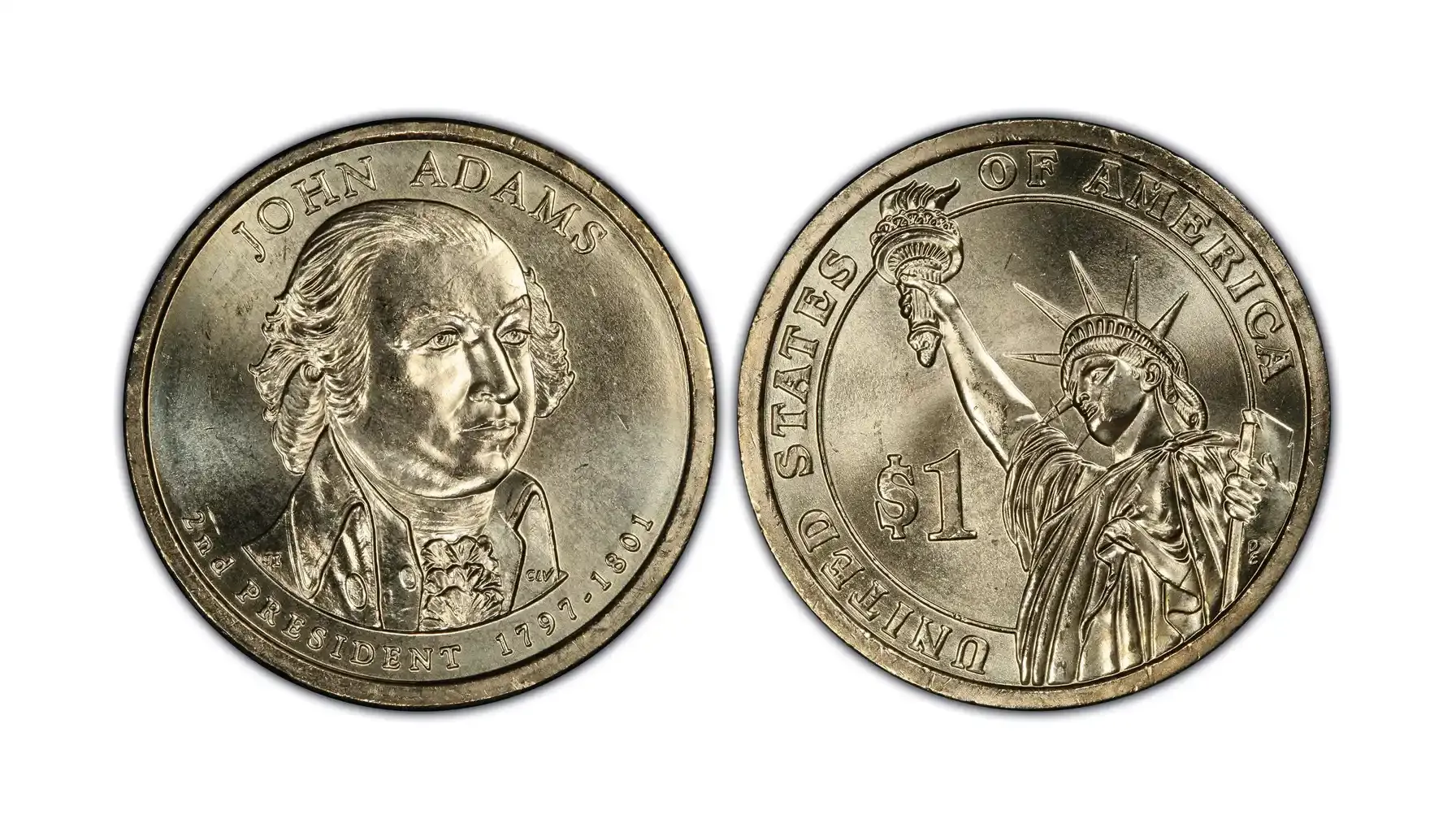
Circulation Challenges
Even with the substantial mintage, these dollars were still not widely used. Because paper dollar bills were still preferred, the majority of John Adams $1 coins were either sold directly to collectors or kept in Federal Reserve vaults.
How Much is a John Adams Dollar Coin Worth?
The value of John Adams dollar coin is greatly determined by a number of criteria, including its condition, rarity, and presence of any distinctive characteristics or minting mistakes. Although it bears a face value of only $1 face value, its prices fluctuate. Let us check how.
Circulated Coins
Generally speaking, monetary items that have been widely used maintain their $1 face value. Unless they have peculiar characteristics, like mint faults, these units of currency are widely available and have little collector demand.
Uncirculated Coins
As a rule, collectors are particularly interested in $1 coins that have never been used in circulation. The John Adams dollar coin value in this case usually falls between $2 and $3, depending on the strike's quality and condition.
Proof Coins
Thanks to their superior appearance, proof varieties, which are struck with a mirror-like polish and sold directly by the US Mint, have a higher value. When included in a full Presidential proof set, these can have values of $5 to $10 or more.
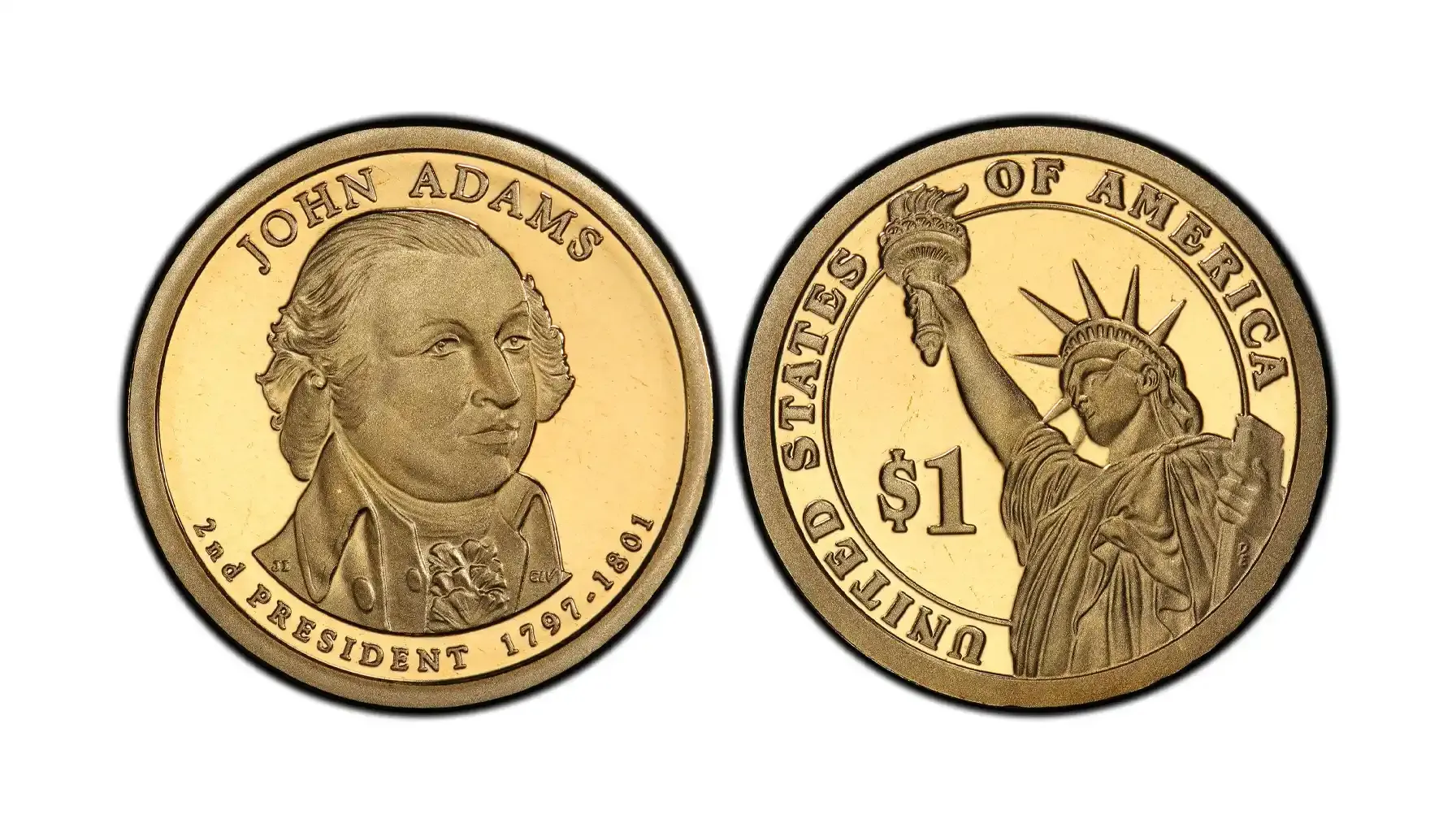
Error Coins
The true numismatic opportunity is revealed when one finally opts for erroneous opportunities. Coins that lack the year of minting or inscriptions such as "E Pluribus Unum" might sell for $50 to $100 (check on one of the coin selling resources). Numismatic objects with overlapping or duplicated edge inscriptions are uncommon and can fall in a price range of $75 to $150.
Graded Coins
Professionally graded coins from organizations like PCGS or NGC are always worth more! Proof varieties with a perfect grade (PR-70) can sell for as much as $50, while graded uncirculated ones with a high grade (such as MS-65+) may retail for $10 to $20 or more.
Quick John Adams $1 Coin Values | ||
Circulated Coins | General circulation condition | $1 (face value) |
Uncirculated Coins | Mint condition | $2–$3 |
Proof Coins | Mirror-like finish | $5–$10 |
Missing Edge Lettering | Error coin | $50–$100+ |
Double Edge Lettering | Error coin | $75–$150+ |
Graded Uncirculated Coin | MS-65 or higher (pro-graded) | $10–$20+ |
Graded Proof Coin | PR-70 (perfect grade) | $50+ |
Finally, Fun Facts and Trivia!
Edge Lettering: A Unique Feature with a Controversial Past
For the first time in a while, the John Adams $1 coin introduced incuse edge lettering, a unique characteristic that is rarely found on modern US coinage. Along the coin's edge are inscriptions such as "E Pluribus Unum," "In God We Trust," and the year and mint mark.
This feature was novel, but it was not immune to some challenges. Highly sought-after error coins were produced by minting certain pieces with overlapping or doubling text, while others lacked edge inscriptions. These errors excited collectors by transforming ordinary coins into precious rarities.
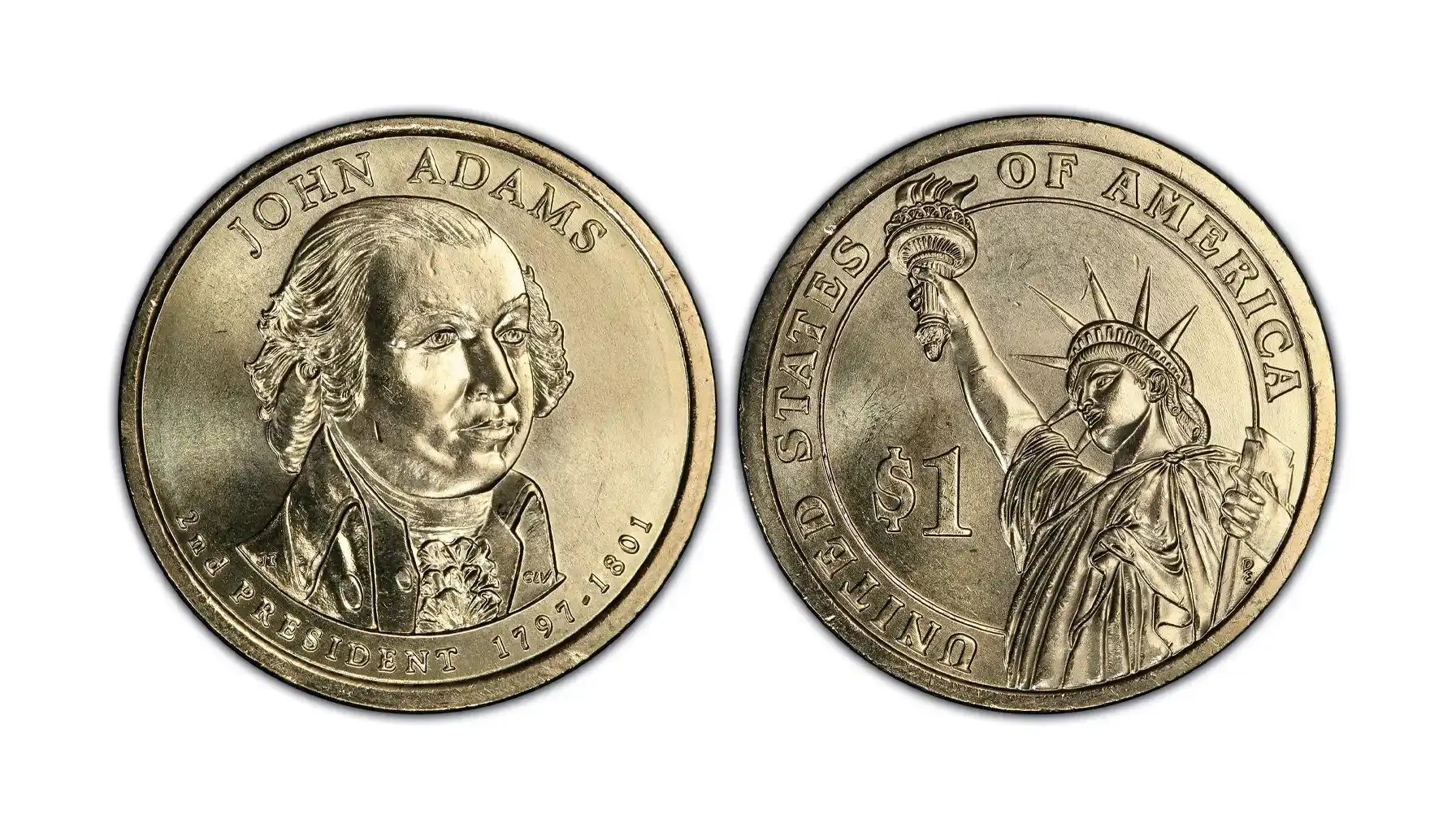
Mintage Numbers That Reflect Initial Enthusiasm
Public enthusiasm for the Presidential $1 Coin Program culminated in 2007, the year this type of currency was introduced. This passion was reflected in the production of almost 224 million John Adams coins (in total)! But because the dollar coins were never widely used in circulation, they ended up being kept in vast quantities at Federal Reserve vaults. These days, since collectors can easily obtain such coins, it is a convenient way to get started in numismatics.
A Family Legacy on US Coins
It is interesting! John Adams was one of only two American presidents who had a son to become a president, too. It was John Quincy Adams, the 6th president of the US. In the series, both men were recognized in the Presidential $1 Coin Program, forming a unique father-son duo. Since these coins represent a common familial tradition of leadership and national service, collectors frequently value their historical significance and assemble these instances together.
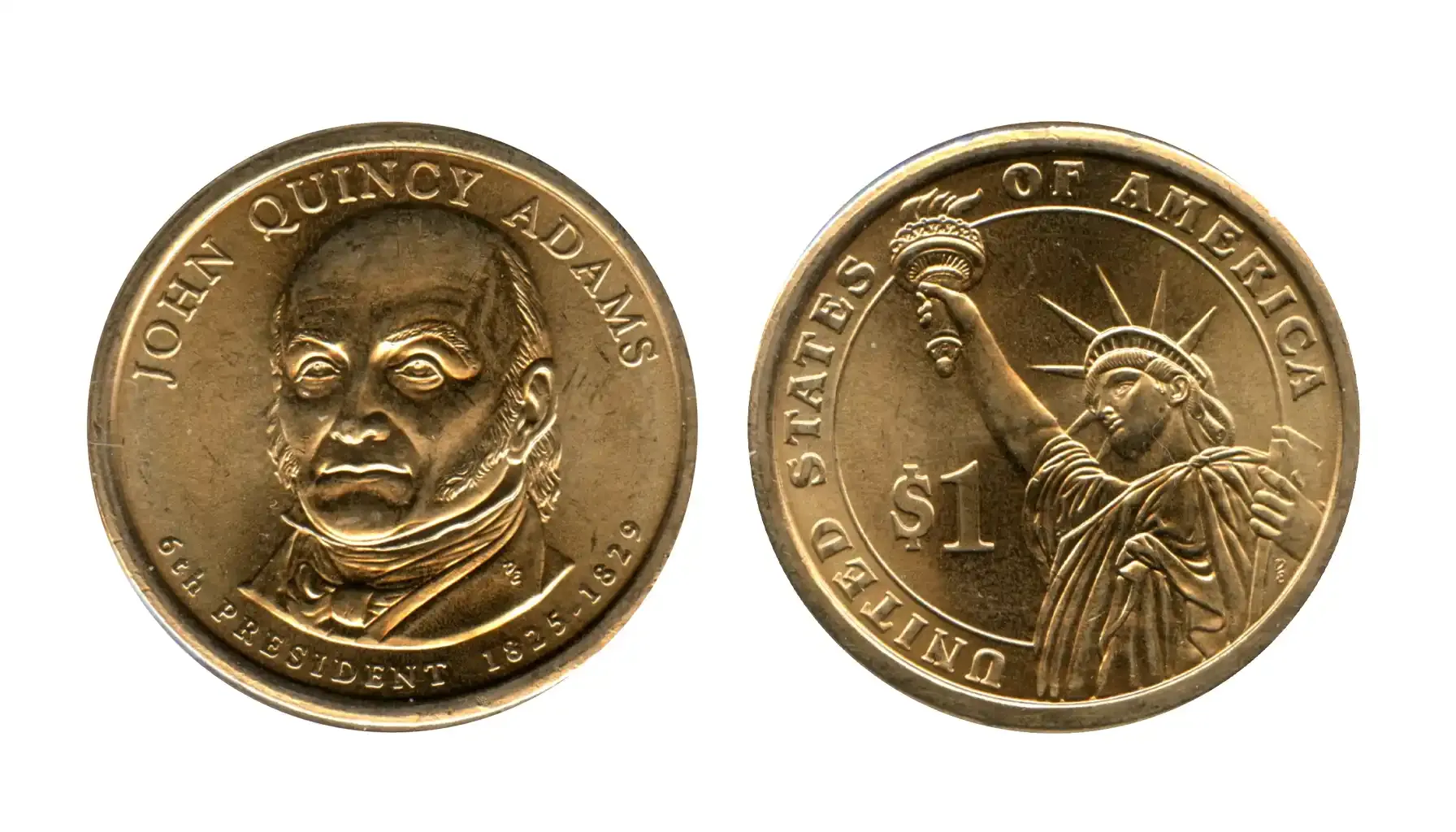
One and Only Way to Estimate Value – Coin ID Scanner
Sometimes, it can be challenging to determine the real John Adams 1$ coin value, particularly if it has mistakes or distinctive features. Here, we would like to present Coin ID Scanner, a new yet promising instrument that assists coin collectors in precisely identifying, classifying, and determining the worth of their assets.
As such, users may scan their coins to get comprehensive details about their basics, i.e., market value, rarity, and condition, and include them in the collections with ease. Why not try it today?
Never forget about history and cherish your memories with coins you own and collections you assemble!

